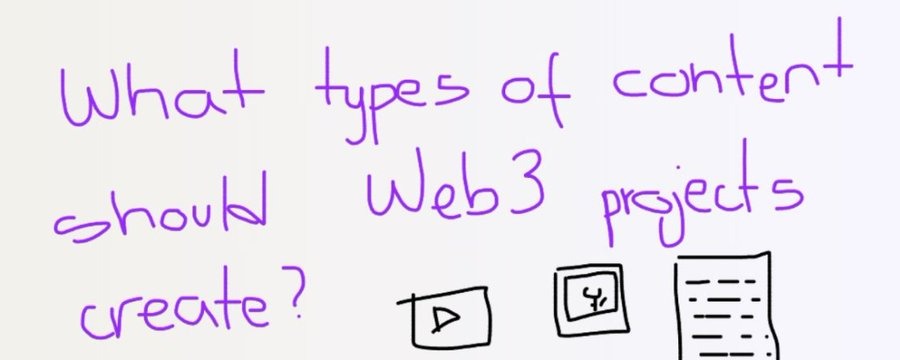5 Types of Content Every Web3 Brand Needs to Grow

Web3 is chaotic, fast-paced, and saturated with noise. Attention is currency, and if you're not using content to earn it, you're going to get left behind. Whether you're building a DeFi protocol, launching a modular infrastructure layer, or creating a Web3 game, one truth applies to all:
If you can’t explain it clearly, you can’t scale it effectively.
At Gelo, we’ve worked with a wide range of clients in the Web3 space, from ERC-standards to games. From that experience, we've identified five foundational types of content that every Web3 project needs to establish credibility, educate users, and build a community that sticks around.
Let’s break them down.
Why Content Matters More Than Ever in Web3
Content is not just a vehicle for promotion, it's how you carve your narrative into the market. In a space where technology is complex and audiences are skeptical, content plays a critical role in:
- Educating users and reducing friction
- Building long-term trust and loyalty
- Humanizing your team and brand
- Driving scalable, organic growth
Done right, content becomes your most effective and compounding growth engine. It helps you control your story and connect deeply with the people who matter.
1. Documentation
Documentation is your first chance to build trust and transparency. Yet many projects rush this step, resulting in half-baked docs filled with jargon or missing context.
Great documentation improves the onboarding experience, reduces confusion, and builds long-term user and developer trust. It also signals operational maturity which is especially important in a skeptical market.
- Market and Product Context: Begin with the "why", explain the market need, the problem you're solving, and how your product fits into the broader ecosystem.
- Step-by-Step Guides: Offer simple walkthroughs for how to use the product, deploy it, or integrate it into workflows. This makes onboarding frictionless and empowers users.
- Developer Integration Docs: Provide detailed technical documentation for developers to build with or on your product. Include sample code, architecture diagrams, and use cases.
- FAQs: Proactively address common questions to improve support efficiency and customer confidence. It's a subtle but powerful way to demonstrate user empathy.
Good documentation reduces support tickets, builds confidence, and accelerates adoption.
2. Social Media Content
If your project isn't making noise on X (former Twitter), you might as well be invisible. But in a timeline full of memes and macro takes, standing out requires more than just text.
Social media is where narratives are born and where loyalty is built. In Web3, your brand needs to be part educator, part entertainer, and part community builder.
- Rich Media Assets: Infographics, diagrams, and visuals help explain complex concepts quickly. They also stand out on feeds and are far more shareable than plain text.
- Short-Form Videos: Use short interviews, explainers, or animations to showcase your product, share opinions, and introduce your team’s voice. They’re perfect for attention retention and personalizing the brand.
- Live Streams & X Spaces: Hosting live events helps humanize your team, answer community questions in real-time, and build direct trust. These should be regular touchpoints, not one-offs.

3. Long-Form Videos
While short-form video captures attention, long-form builds depth. This is your opportunity to teach, explain, and persuade, especially when it comes to technical projects.
Long-form video allows you to unpack complex ideas, show your team’s expertise, and repurpose high-value content across other channels.
- Tutorials & Explainers: Demonstrate product features with screen recordings, walkthroughs, and animations. This builds clarity and confidence.
- Webinars: Use these for developer onboarding, tech deep-dives, or community Q&As. They're great for activating your inner circle of power users.
- Interviews & Podcasts: Appear on or host conversations with ecosystem leaders. They build credibility, expand reach, and offer fresh ways to distribute your brand story.
Long-form content can become an entire waterfall, repurposed into threads, shorts, reels, and more.
4. Thought Leadership
The most credible brands in Web3 aren’t just shipping non-stop, they’re thinking out loud. Thought leadership separates signal from noise and positions you as an industry guide.
In a saturated market, strong opinions and deep insights give your brand personality, depth, and differentiation.
- Research Articles: Publish original research, deep dives, or industry reports. These pieces serve as intellectual proof of your team’s vision and analytical capability.
- Op-Eds: Add personal takes to industry news, trends, or technology debates. Be bold. Be opinionated. Invite conversation.
- Podcasts & Guest Features: Use long-form audio or video to share your philosophy, discuss challenges, or network with others. You also tap into other communities this way.

5. Articles and SEO Content
Blog content might not be flashy, but it’s still one of the most powerful ways to educate your audience, build authority, and capture organic traffic
Even in low-traffic niches, SEO can help establish your project as the go-to educational resource. Plus, it’s low-cost and compounding.
- News & Updates: Keep your audience informed of releases, upgrades, milestones, and key achievements. Consistency signals reliability.
- Case Studies: Showcase success stories. Whether it's a protocol integration, DAO vote, or user testimonial, prove your impact with real-world examples.
- Educational SEO Content: Answer high-intent queries. Even if monthly search volume is low, dominating the top results builds brand authority in your niche. Think: “What are smart contracts?” or “How to use DeFi wallets?”
-
SEO is a long game. But it's one of the few strategies with lasting compounding value.
Final Thoughts
Content is no longer a "nice to have". It’s the infrastructure that supports everything else.
In a space where attention is fragmented and trust is scarce, your content is the bridge between your vision and your audience. Whether you're trying to attract new users, educate developers, gain long-term credibility, or differentiate from dozens of similar-sounding competitors, your success depends on your ability to communicate clearly and consistently.
The five pillars we've outlined aren’t just tools. They’re strategic assets that help you scale sustainably, create emotional connection, and stay relevant in an ever-evolving market.

